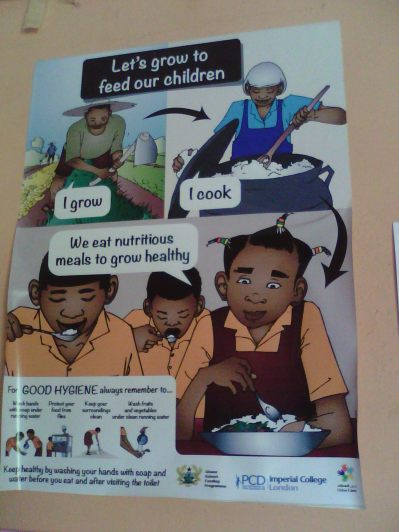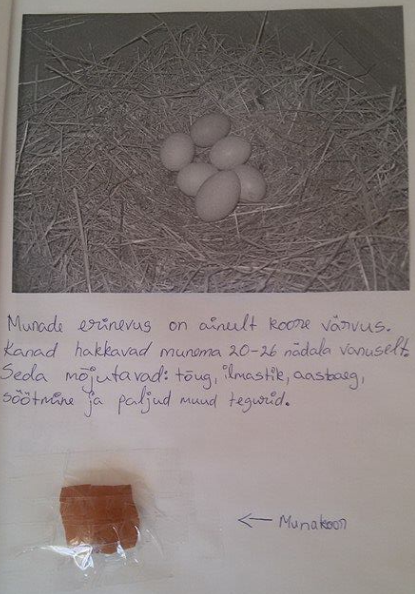A intruduction to project värviline maailma (colorful world)
Valga Gymnasium offers from last spring to valga city basic school students a career training courses. Course purpose is to help basic school students to choose what comes next, to introduce different jobs, and schools speciality, which is also the UNESCHO school status. The courses are everymonth on friday and last for 5 hours. Over the year there was seven school days. Two days of course we devoted Global Education themes. In the end of the course 64 students got a diplom.
In April we prepared lots of preparations ,because we wanted to do something special for that day and we wished that our students also would take part in organizing, listeners and also took part in them.
Sushi making workshop
The day started in the school kitchen, where students were waited by nori sheets, sushi mats and boiled rice. Luckily some of the students have already tried to made it and therefore they were also helping to organize. Half of the group spinned the sushi rolls and the second half made Japanese Fresh rolls. This fresh rolls were rolled to a thin rice leaves with hot water. In the iniside there was a cucumber, pepper, shrimp sticks, carrots and so on. The fresh rolls was a clear under the colorful of the inside.

With laughter and more fun hour and a half there was lots of tasty foods for later eating.
Tibetan in school
School had invited a adventurer called Roy Strider with a real tibetian Dolma and they bringed a Tibetian dog Karma.

All the school and the course students listened them with pleasure of their adventurous stories. Dolmas story was translated to the students by Roy Strider. Dog only slept all the day :). Questions didn’t want to end. Even after the course everybody asked lot of questions. That exotical person we haven’t seen in school before.
Japanese workshop
Japanese workshop aim was to but the students to a new situation. The classroom was made a japanese style with Geishas. In the room was a incense smoke and the fresh air gave cherry blossoms. To the room you could enter from a 66cm door, you needed to bent down to get in.
.
When you enter you had to take your shoes off and but them near the door. Visitors were hosted by the house ladies, who bented down and silently leaded visitors to their carpet on the ground. When the visitors had sit on the carpet then they offered some Chinese tea. Popcorn and rice and good smell made the tea tasty. Students shared their cups like the traditional japanese way and prayers.
Japanese tradition showed our geishas who were actually our 11 grade students with silent waving water and music they shared the visitors eating sticks and visitors tried to eat what they had made in the morning
.
In the workshop there was 25 students so silent and were so impressed by the food and they enjoyed it. And when the lesson ended the bented opposite with the women and turned around and left the house.
Tibetian workshop
This room had a tibetian flag and some good prayres on the pages Students were sitting on the carpets and pillows and then listened to the tibetian women who talked about high mountains. Also there was Tibetian music. In the middle of the classom there was butten a camping stove, because when Dolma talked she could make some traditional Jaki tea. Students looked impressed because they hadn’t seen it before. They had never seen that a butter and salt was butten in there so much.
In the building the smell was rich and different. When the tea was ready everybody tried it. Who said it was good and some said it was disgusting nobody felt cold about the tea or Dolma and Roy’s story- Visitor also singed us a children song, which was really old song. Tibetian dog Karma still sleeped all the time when we talked. Everytime they changed the workshops with differend groups so that both groups can get their.
Also to make the day more colorful, in the kitchen there was some Asian food. After the workshops there was a poll and this global education workshop winned every heart. The Project was helped by MTU Mondo. The Career days were made by the wonderful team, were belonged Andrus Murumaa, Pille Olesk, Meelis Oja and Triinu Ugur. In the workshops were project helpers from the 11. grade students.

 This school year 2018/19 the school linking focus is on the everyday life of children/youth in different countries. For this we collected short videos with our volunteers’ help in Estonia, Ukraine, Ghana and Uganda.
This school year 2018/19 the school linking focus is on the everyday life of children/youth in different countries. For this we collected short videos with our volunteers’ help in Estonia, Ukraine, Ghana and Uganda. 
 from May 1st until June 6th 2017. It was a cooperation project between AIESEC in Estonia and NGO Mondo, Estonian National Coordination of UNESCO Associated Schools Project Network (supported by UNESCO National Commision and Estonian Ministry of Education and Research).
from May 1st until June 6th 2017. It was a cooperation project between AIESEC in Estonia and NGO Mondo, Estonian National Coordination of UNESCO Associated Schools Project Network (supported by UNESCO National Commision and Estonian Ministry of Education and Research).
 15-19 May – School visits
15-19 May – School visits

















 As in Väike-Maarja we also have a vocational school, Liina held a cooking course for vocational students and their supervisors. Together they prepared a Ghanaian dish called „red-red“ that was served with fried bananas. The participants all agreed – the result was delicious. Liina had only positive words about the active cookers, who were even ready to take a next cooking lesson by the end of the class.
As in Väike-Maarja we also have a vocational school, Liina held a cooking course for vocational students and their supervisors. Together they prepared a Ghanaian dish called „red-red“ that was served with fried bananas. The participants all agreed – the result was delicious. Liina had only positive words about the active cookers, who were even ready to take a next cooking lesson by the end of the class.

